-
 Bitcoin
Bitcoin $106,754.6083
1.33% -
 Ethereum
Ethereum $2,625.8249
3.80% -
 Tether USDt
Tether USDt $1.0001
-0.03% -
 XRP
XRP $2.1891
1.67% -
 BNB
BNB $654.5220
0.66% -
 Solana
Solana $156.9428
7.28% -
 USDC
USDC $0.9998
0.00% -
 Dogecoin
Dogecoin $0.1780
1.14% -
 TRON
TRON $0.2706
-0.16% -
 Cardano
Cardano $0.6470
2.77% -
 Hyperliquid
Hyperliquid $44.6467
10.24% -
 Sui
Sui $3.1128
3.86% -
 Bitcoin Cash
Bitcoin Cash $455.7646
3.00% -
 Chainlink
Chainlink $13.6858
4.08% -
 UNUS SED LEO
UNUS SED LEO $9.2682
0.21% -
 Avalanche
Avalanche $19.7433
3.79% -
 Stellar
Stellar $0.2616
1.64% -
 Toncoin
Toncoin $3.0222
2.19% -
 Shiba Inu
Shiba Inu $0.0...01220
1.49% -
 Hedera
Hedera $0.1580
2.75% -
 Litecoin
Litecoin $87.4964
2.29% -
 Polkadot
Polkadot $3.8958
3.05% -
 Ethena USDe
Ethena USDe $1.0000
-0.04% -
 Monero
Monero $317.2263
0.26% -
 Bitget Token
Bitget Token $4.5985
1.68% -
 Dai
Dai $0.9999
0.00% -
 Pepe
Pepe $0.0...01140
2.44% -
 Uniswap
Uniswap $7.6065
5.29% -
 Pi
Pi $0.6042
-2.00% -
 Aave
Aave $289.6343
6.02%
Is the first short-sell arrangement rebound of the moving average system a selling point?
The first rebound after a short-sell signal in crypto can offer strategic selling opportunities, but confirmation through volume, Fibonacci levels, and candlestick patterns is crucial to avoid false reversals.
Jun 18, 2025 at 09:28 pm
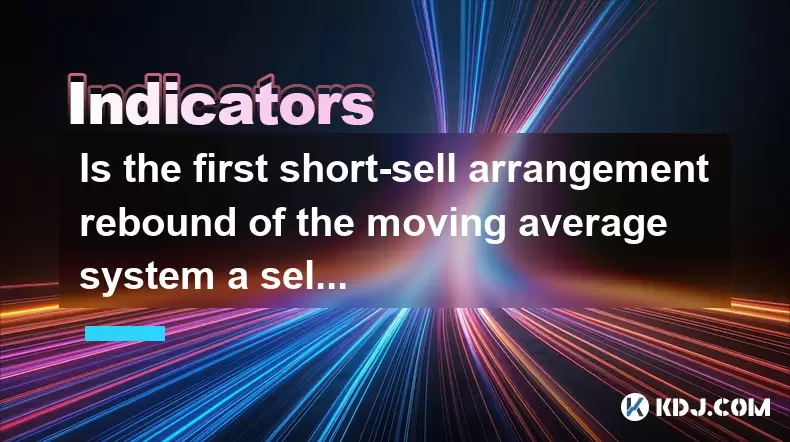
Understanding the Moving Average System
The moving average system is one of the most widely used technical analysis tools in cryptocurrency trading. It helps traders identify trends, potential reversals, and key support or resistance levels. The system typically involves plotting two or more moving averages — such as the 50-day and 200-day simple moving averages (SMA) — on a price chart to generate buy or sell signals.
In this context, a short-sell arrangement refers to a strategy where traders take positions anticipating a decline in asset value. When a short-sell signal is generated by a crossover or divergence in the moving averages, it sets the stage for what some call a "rebound" — a reversal where the price moves back toward the mean or expected direction after a temporary pullback.
A critical question arises: Is the first rebound after initiating a short-sell using the moving average system a reliable selling opportunity?
What Constitutes a Short-Sell Signal in the MA System?
Short-sell signals in the moving average system are commonly triggered by specific conditions:
- A crossover of shorter-term MAs below longer-term MAs, such as the 50-day SMA crossing below the 200-day SMA (known as a death cross).
- Price action consistently trading below key moving averages, indicating bearish momentum.
- Divergence between the moving average slope and price movement, where price makes lower highs but the moving average continues to trend downward.
Once these signals confirm a downtrend, traders often open short positions expecting further price depreciation. However, markets — especially cryptocurrency — are known for their volatility, which can lead to false breakouts and unexpected rebounds.
Defining the First Rebound After a Short-Sell Signal
After a strong downtrend begins following a confirmed short-sell signal, a first rebound may occur due to profit-taking, short-term corrections, or minor bullish sentiment spikes. This rebound appears as a temporary upward move in price that retraces part of the prior decline but doesn't necessarily invalidate the overall bearish setup.
Traders who entered short positions at the initial signal might see this rebound as an opportunity to either:
- Cover existing shorts for partial profit.
- Add to short positions if the rebound fails to breach critical resistance levels tied to the moving averages.
It's important to distinguish between a genuine trend reversal and a temporary bounce. Tools like Fibonacci retracement levels, RSI (Relative Strength Index), and volume analysis become crucial in confirming whether the rebound is sustainable or just noise.
Analyzing Historical Crypto Market Behavior Around MA Rebounds
Looking at historical Bitcoin and Ethereum charts, we observe multiple instances where a death cross was followed by a short-term rally before resuming the downtrend. For example:
- In early 2022, Bitcoin experienced a death cross in May, followed by a brief rally in June before continuing its bearish trajectory into July.
- Similarly, Ethereum’s 2021–2022 cycle showed multiple false rallies after key moving average crossovers.
These examples suggest that while rebounds do occur, they often fail to establish new uptrends unless accompanied by broader market sentiment shifts or macroeconomic changes. Therefore, the first rebound should not be automatically treated as a definitive selling point without additional confirmation.
How to Evaluate Whether the Rebound Is a Selling Point
To determine if the first rebound after a short-sell signal is a valid selling opportunity, consider the following steps:
- Check alignment with larger timeframes: If daily charts show a bearish structure but hourly charts indicate oversold conditions, the rebound may be corrective rather than reversal-based.
- Measure retracement levels: Use Fibonacci retracement from the swing high to the recent low. If the price only reaches the 38.2% or 50% level and shows rejection, it may indicate continuation of the downtrend.
- Observe candlestick patterns during the rebound: Bearish engulfing patterns, shooting stars, or dark cloud covers near resistance levels derived from moving averages can reinforce the idea that the rebound is failing.
- Monitor volume and order flow: A rebound with declining volume compared to the initial breakdown suggests weakness in buying pressure, supporting the likelihood of the downtrend resuming.
Each of these elements provides context to the nature of the rebound and whether it offers a viable selling opportunity within the framework of the moving average system.
Practical Trading Strategy: Managing Shorts During the First Rebound
If you're managing a short position initiated via the moving average system, here’s how you can approach the first rebound:
- Take partial profits at the initial target if the rebound starts forming without clear reversal signs.
- Use trailing stops to protect gains as the downtrend progresses.
- Avoid aggressive entries during the rebound unless there's confluence with other indicators like RSI divergence or MACD bearish crosses.
- Wait for re-entry signals if the rebound stalls near a key moving average (e.g., 50-day SMA acting as resistance).
This approach allows traders to remain flexible and responsive to evolving market conditions without overcommitting to any single move.
Frequently Asked Questions
Q: Can the moving average system be applied to altcoins effectively?
Yes, but with caution. Altcoins often exhibit higher volatility and less predictable behavior compared to major cryptocurrencies like Bitcoin and Ethereum. Traders should adjust moving average periods accordingly and use additional filters like volume or volatility indicators.
Q: Should I always wait for a rebound after a short-sell signal?
No. In strong downtrends, waiting for a rebound may result in missed opportunities. However, entering immediately carries the risk of catching a falling knife. Balancing timing with risk management is essential.
Q: What role does market sentiment play in evaluating rebounds?
Market sentiment significantly influences the strength and duration of rebounds. Positive news or sudden inflows into crypto markets can temporarily override technical setups, making it vital to monitor sentiment indicators alongside moving averages.
Q: How do I differentiate between a rebound and a trend reversal?
Look for sustained price action above key moving averages, increased volume on up days, and bullish divergences in momentum oscillators. A true reversal usually requires structural shifts in both price and volume dynamics.
Disclaimer:info@kdj.com
The information provided is not trading advice. kdj.com does not assume any responsibility for any investments made based on the information provided in this article. Cryptocurrencies are highly volatile and it is highly recommended that you invest with caution after thorough research!
If you believe that the content used on this website infringes your copyright, please contact us immediately (info@kdj.com) and we will delete it promptly.
- Parataxis Holdings & Bridge Biotherapeutics: A Bitcoin Treasury Play in South Korea
- 2025-06-20 20:25:12
- Pi Network Price Prediction: Navigating June 2025's Uncertainties
- 2025-06-20 20:25:12
- AI Chip Maker Cerebras Hacked: Crypto Scam Alert!
- 2025-06-20 20:45:13
- dYdX Surge Program: Leveling Up DeFi Trading with Incentives
- 2025-06-20 20:45:13
- Bitcoin Breakout Watch: Can BTC Surge to $100K and Beyond?
- 2025-06-20 20:50:12
- Coinsilium, Bitcoin Treasury, Forza!: Riding the Crypto Wave in 2025
- 2025-06-20 20:50:12
Related knowledge

Is the golden cross of the ROC indicator below the zero axis effective?
Jun 20,2025 at 09:42pm
Understanding the ROC Indicator and Its Role in Cryptocurrency TradingThe Rate of Change (ROC) indicator is a momentum oscillator widely used by traders to assess the speed at which cryptocurrency prices are changing. It measures the percentage difference between the current price and the price from a certain number of periods ago. The ROC helps identif...
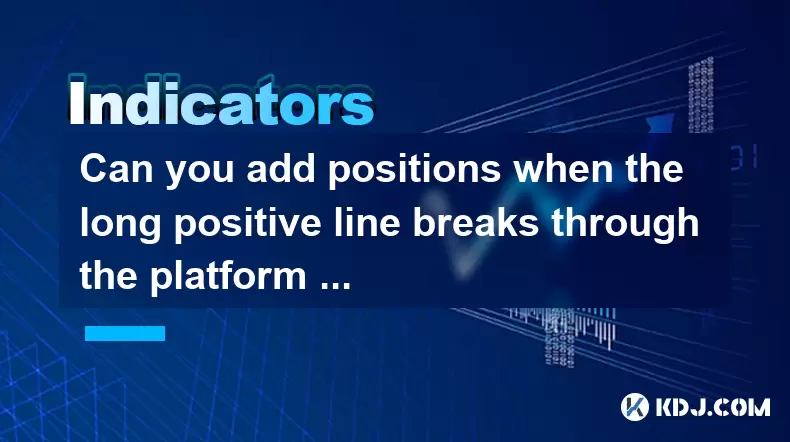
Can you add positions when the long positive line breaks through the platform and then shrinks and falls back?
Jun 20,2025 at 08:57pm
Understanding the Price Pattern: Breakthrough, Retract, and ConsolidationIn cryptocurrency trading, one of the commonly observed patterns involves a long positive line breaking through a consolidation platform, followed by a retraction or pullback. This scenario often raises questions among traders about whether to add positions after such a move. The p...
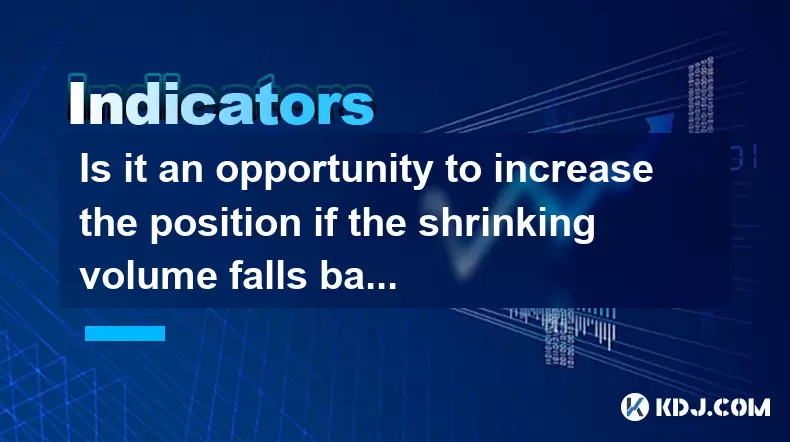
Is it an opportunity to increase the position if the shrinking volume falls back to the rising trend line?
Jun 20,2025 at 06:22pm
Understanding the Shrinking Volume in Cryptocurrency TradingIn cryptocurrency trading, volume is one of the most critical indicators used to confirm price movements and trends. When traders observe a scenario where volume shrinks during a pullback, it can signal either a lack of selling pressure or an imminent reversal. This phenomenon often occurs when...
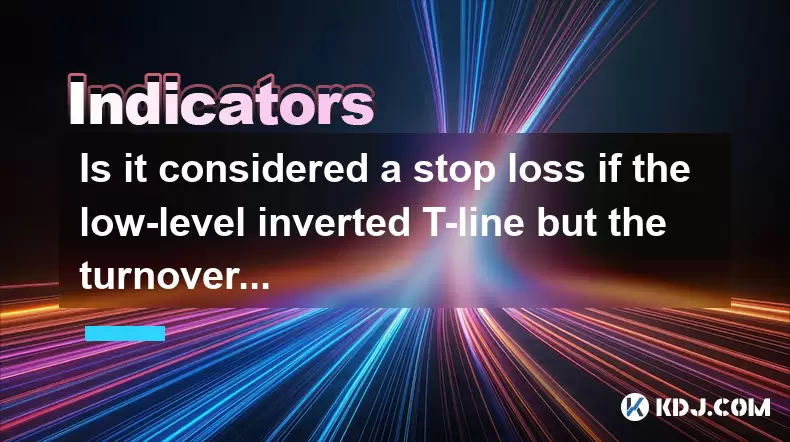
Is it considered a stop loss if the low-level inverted T-line but the turnover rate is extremely low?
Jun 20,2025 at 04:49pm
Understanding the Low-Level Inverted T-Line in Cryptocurrency ChartsIn technical analysis within the cryptocurrency market, candlestick patterns are crucial indicators for traders to predict potential price movements. The low-level inverted T-line is a specific type of candlestick pattern that often raises questions among traders. This pattern typically...
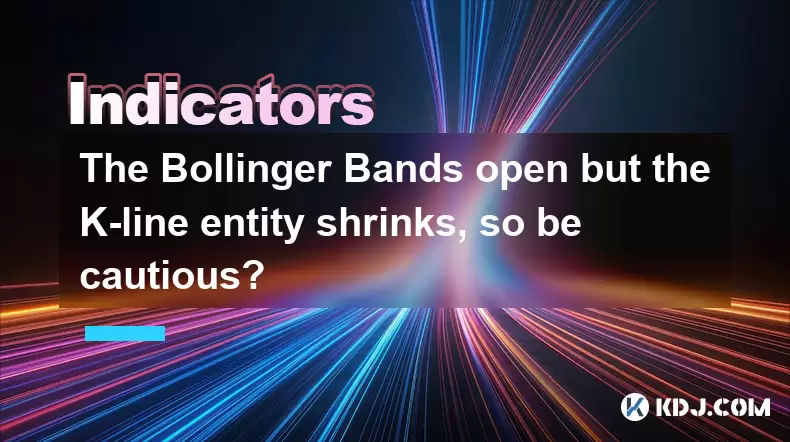
The Bollinger Bands open but the K-line entity shrinks, so be cautious?
Jun 20,2025 at 06:08pm
Understanding the Bollinger Bands and K-Line RelationshipBollinger Bands are a popular technical analysis tool used in cryptocurrency trading. They consist of a moving average (usually 20-period) with two standard deviation lines plotted above and below it. These bands dynamically adjust to price volatility, expanding when volatility increases and contr...
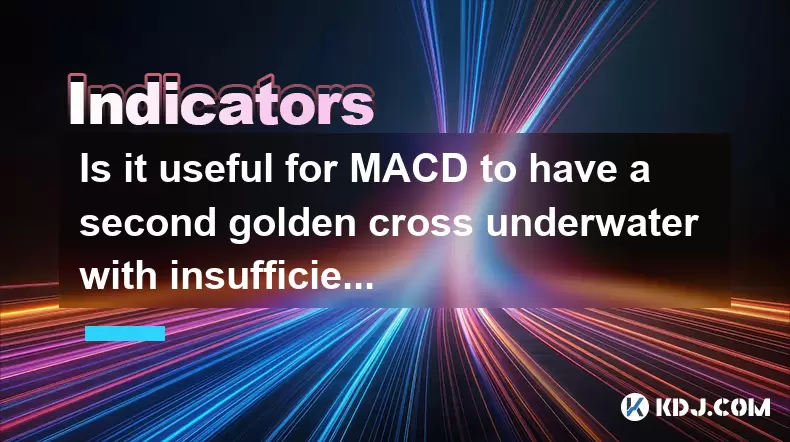
Is it useful for MACD to have a second golden cross underwater with insufficient volume?
Jun 20,2025 at 06:49pm
Understanding the MACD and Its Golden CrossThe Moving Average Convergence Divergence (MACD) is a popular technical analysis tool used by traders to identify potential buy or sell signals. It consists of three components: the MACD line, the signal line, and the histogram. The golden cross occurs when the MACD line crosses above the signal line, often see...

Is the golden cross of the ROC indicator below the zero axis effective?
Jun 20,2025 at 09:42pm
Understanding the ROC Indicator and Its Role in Cryptocurrency TradingThe Rate of Change (ROC) indicator is a momentum oscillator widely used by traders to assess the speed at which cryptocurrency prices are changing. It measures the percentage difference between the current price and the price from a certain number of periods ago. The ROC helps identif...

Can you add positions when the long positive line breaks through the platform and then shrinks and falls back?
Jun 20,2025 at 08:57pm
Understanding the Price Pattern: Breakthrough, Retract, and ConsolidationIn cryptocurrency trading, one of the commonly observed patterns involves a long positive line breaking through a consolidation platform, followed by a retraction or pullback. This scenario often raises questions among traders about whether to add positions after such a move. The p...

Is it an opportunity to increase the position if the shrinking volume falls back to the rising trend line?
Jun 20,2025 at 06:22pm
Understanding the Shrinking Volume in Cryptocurrency TradingIn cryptocurrency trading, volume is one of the most critical indicators used to confirm price movements and trends. When traders observe a scenario where volume shrinks during a pullback, it can signal either a lack of selling pressure or an imminent reversal. This phenomenon often occurs when...

Is it considered a stop loss if the low-level inverted T-line but the turnover rate is extremely low?
Jun 20,2025 at 04:49pm
Understanding the Low-Level Inverted T-Line in Cryptocurrency ChartsIn technical analysis within the cryptocurrency market, candlestick patterns are crucial indicators for traders to predict potential price movements. The low-level inverted T-line is a specific type of candlestick pattern that often raises questions among traders. This pattern typically...

The Bollinger Bands open but the K-line entity shrinks, so be cautious?
Jun 20,2025 at 06:08pm
Understanding the Bollinger Bands and K-Line RelationshipBollinger Bands are a popular technical analysis tool used in cryptocurrency trading. They consist of a moving average (usually 20-period) with two standard deviation lines plotted above and below it. These bands dynamically adjust to price volatility, expanding when volatility increases and contr...

Is it useful for MACD to have a second golden cross underwater with insufficient volume?
Jun 20,2025 at 06:49pm
Understanding the MACD and Its Golden CrossThe Moving Average Convergence Divergence (MACD) is a popular technical analysis tool used by traders to identify potential buy or sell signals. It consists of three components: the MACD line, the signal line, and the histogram. The golden cross occurs when the MACD line crosses above the signal line, often see...
See all articles

























































































